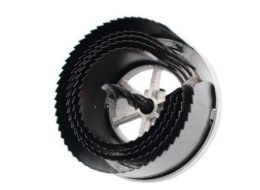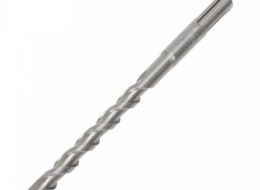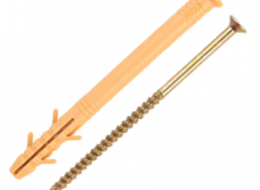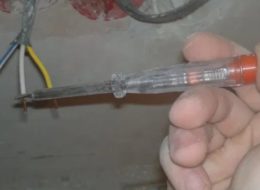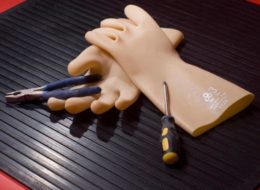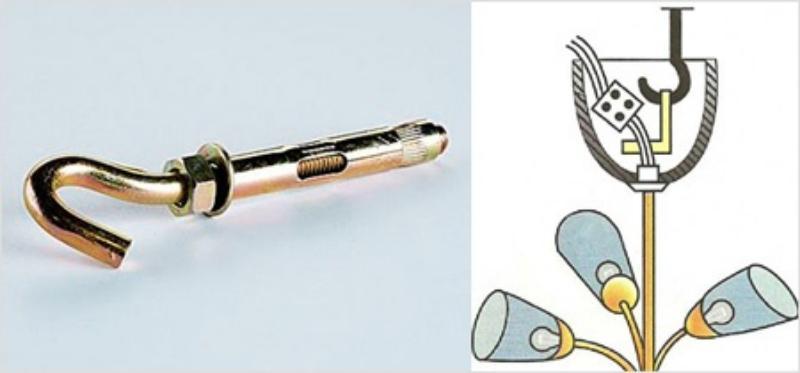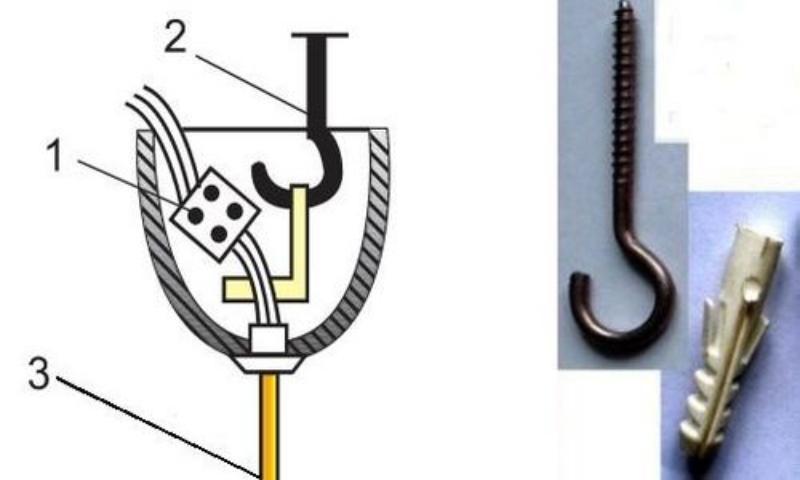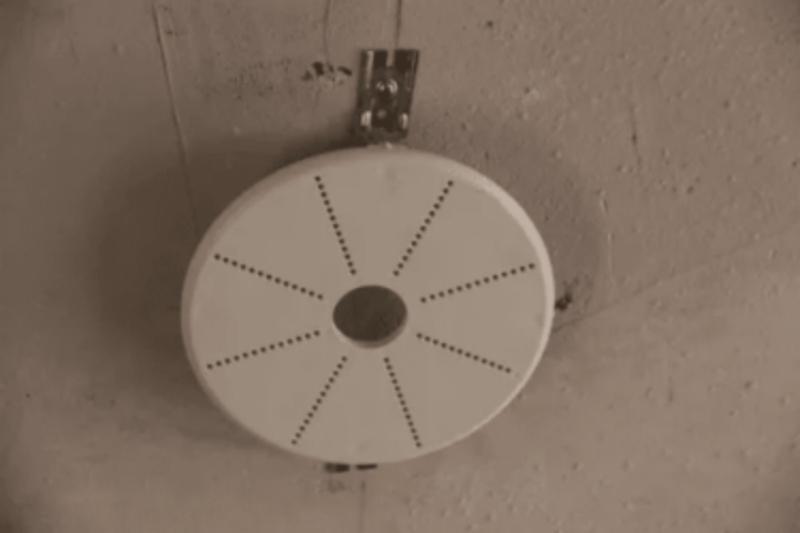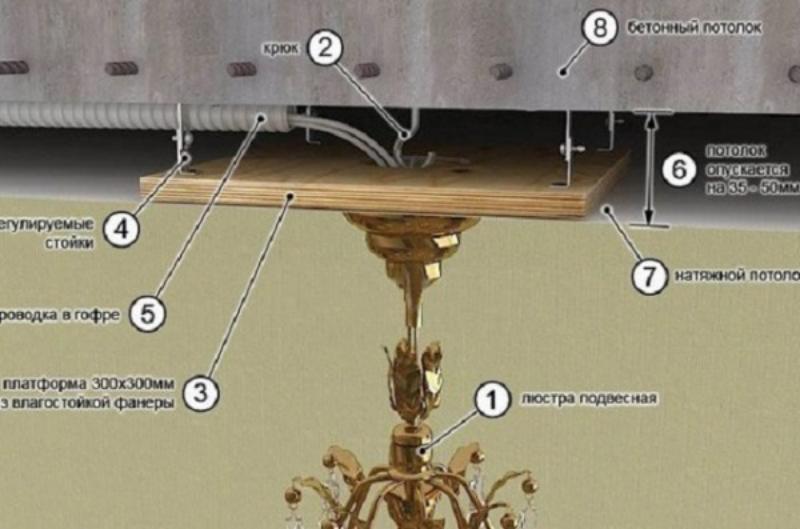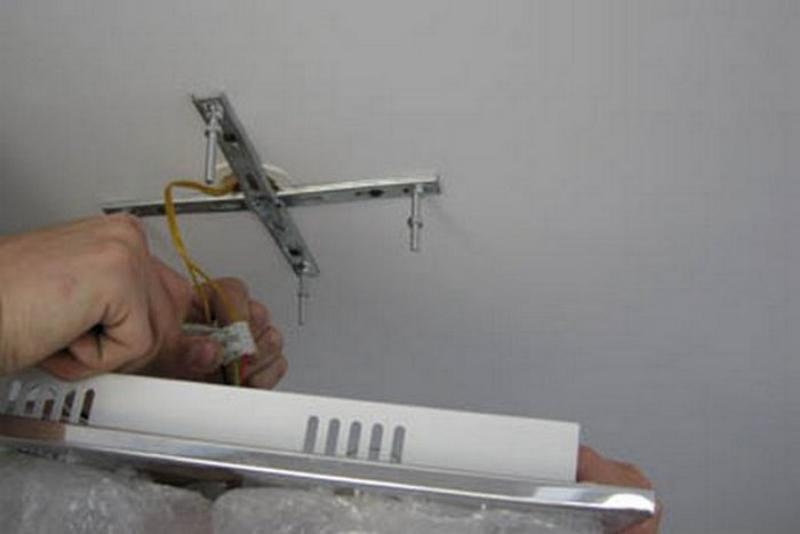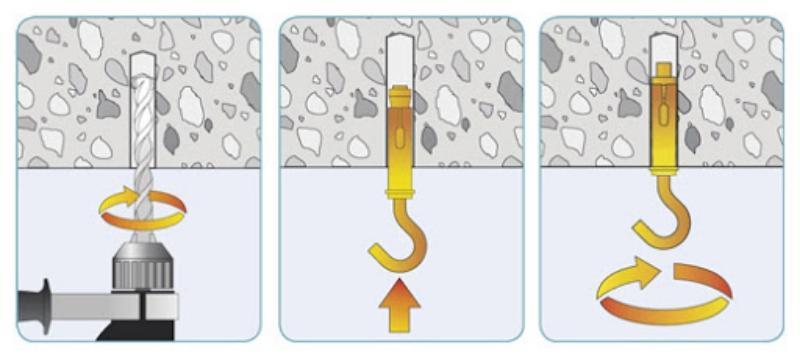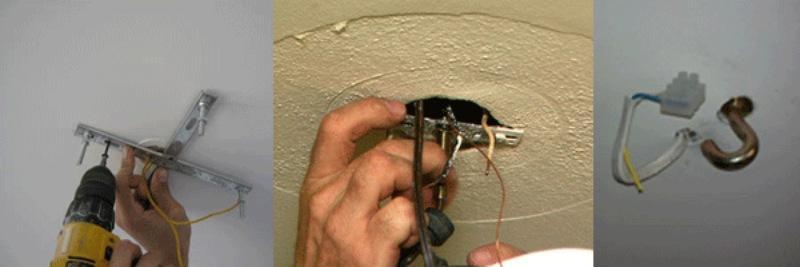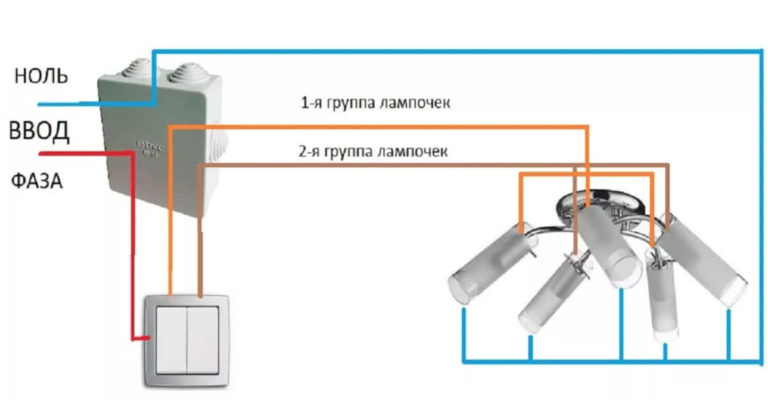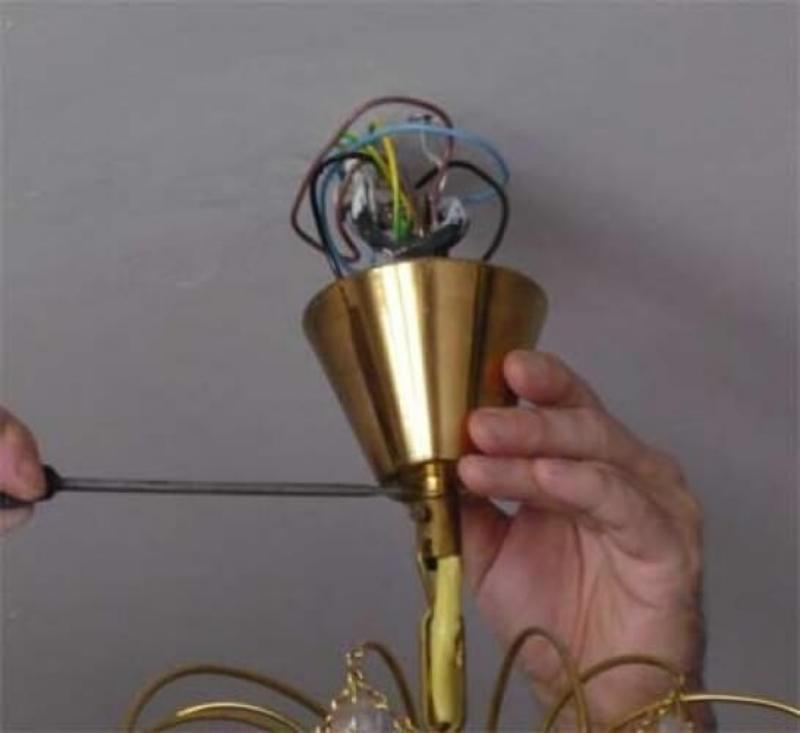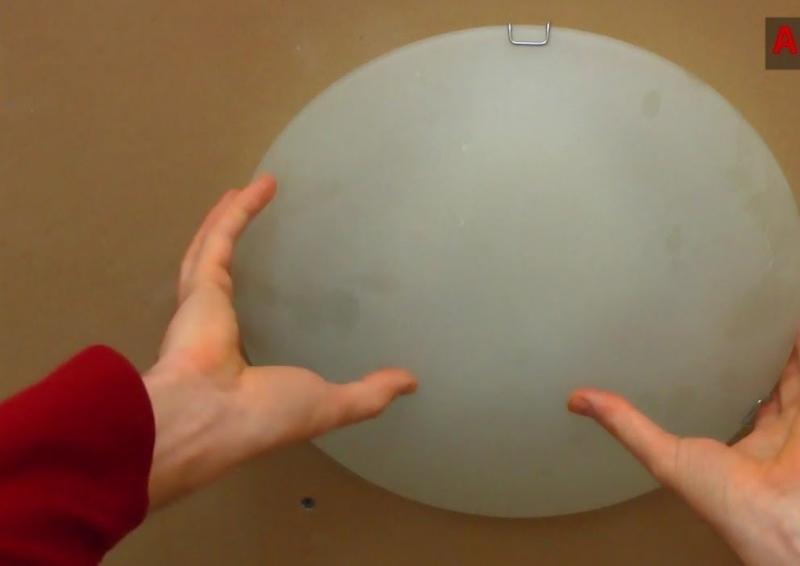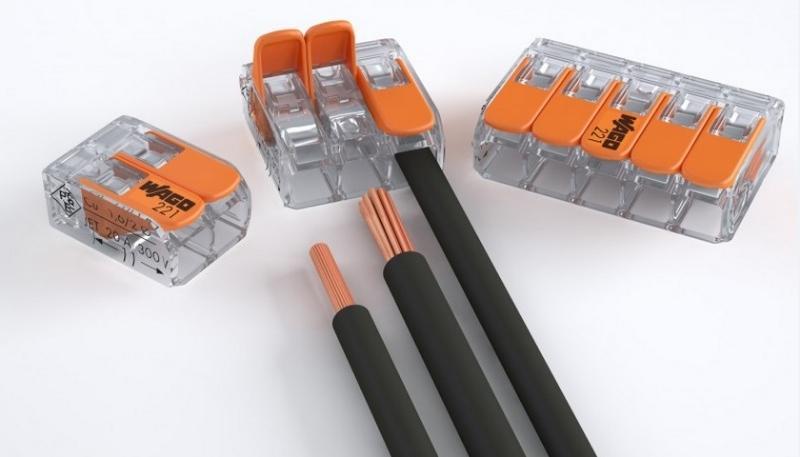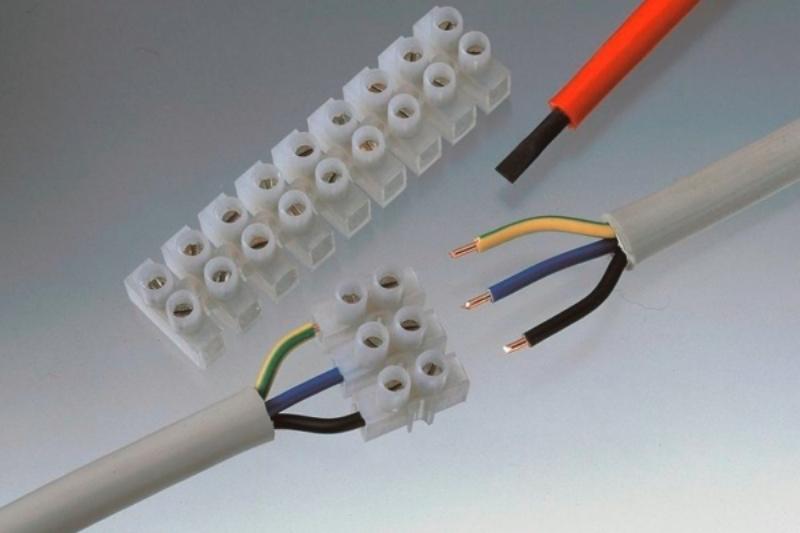How to hang a chandelier on a drywall ceiling
Even before the stage of installation of suspended ceiling structures, it is necessary to plan the lighting system in advance. After the work is finished, it is difficult, but not impossible, to hang the chandelier on the plasterboard without prepared fasteners. But without the pre-prepared electrical wiring to the location of the chandelier you will not be able to install the chandelier.
Choosing a chandelier for drywall ceilings
According to the rules, all wires are hidden in the space given by the width of the metal profile - between the main ceiling and the suspension. The same space reduces the height of the room, which for rooms with low ceilings is a limitation in the choice of lighting fixtures. In order to save space in such rooms, the most common use of consignment chandeliers.
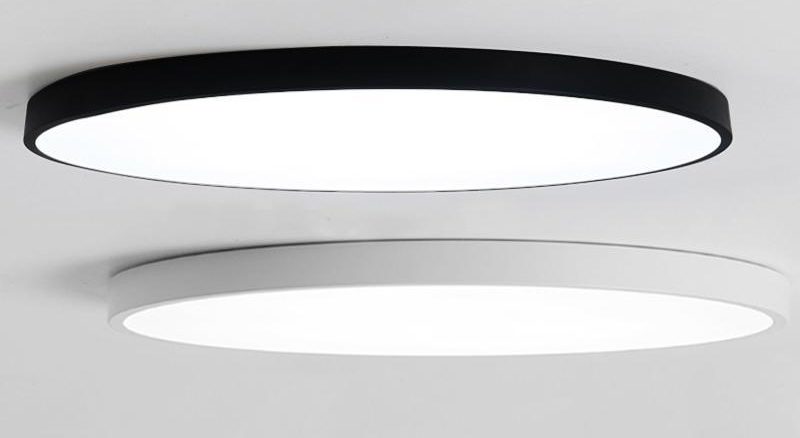
If the height of the room is originally over 2.8 meters, for example, as in the Stalinist apartments, then there is already the size of the lamps are limited only by imagination and common sense. Although the tension and suspended structures are customary to install soffits, classic chandeliers have a place in this case, too.
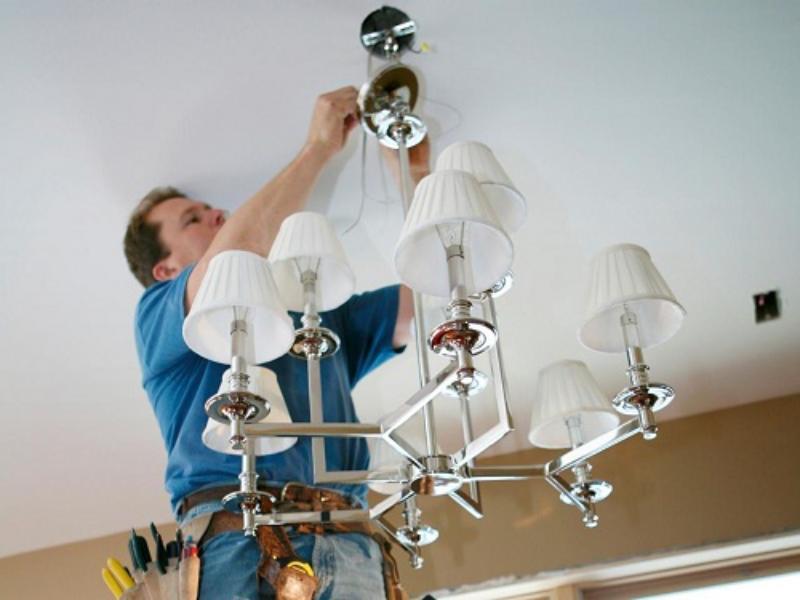
When choosing a model of lamp, it is better to determine in advance the type of its mounting. If you plan to mount the chandelier directly to the plasterboard, then 2-3 kg is the limit for its weight. Otherwise, the canvas will deform or collapse under the point load. Anything heavier - fastened directly to the main slabs of the floor.
Mounting the luminaire
If a power cable is already connected to the place where the fixture is supposed to be installed, you can attach almost any chandelier to the drywall ceiling. Technically it is not so difficult, if you have the necessary tools and have minimal skills in handling them.
Preparation and selection of tools
At the preparatory stage it is necessary to determine the mounting point and mark the ceiling. Place chandeliers as a rule in the center of the room, and if there are several, in such a way that the room was not shaded areas, except when it is assumed by the design plan.
Pay attention! If you have to make holes in the concrete ceiling, you must check the room plan, which should specify the location of internal electrical wiring. This will help to avoid its damage in case of accidental perforation of the hole with a cable. In any case, disconnect the power supply at the circuit breaker before the work is carried out.
To install most types of fixtures, you will need:
- a tape measure;
- Marker, pencil;
- screwdriver or screwdriver;
- wire cutters;
- A hammer drill or impact drill with a concrete drill bit.
If you intend to make a large hole in the GPL, you will need:
- an indicator screwdriver;
- drill bits with core bits;
- String paint;
- Protective equipment - construction dielectric gloves, mask;
- insulation (terminal strips are best);
- fasteners and fixing parts - dowels, anchors, hooks.
Fixing process
After the place of installation of the lighting fixture is marked with appropriate markings, it is necessary to determine the type of mounting system.
On the hook
There are two types of hook-type fasteners:
- Anchor - For solid models from 10 kg.
- On the self-tapping screw with dowel - for hanging chandeliers with a weight of 3-10 kg.
Both systems are similar in principle of installation. A hole is drilled in the concrete with a hammer, which corresponds in diameter and length to the dowel. Dowel is hammered into it flush, and then by twisting the hook, the struts are wedged and the fixing element is secured inside the hole. The light is suspended by the eyelet in the rod, and the place of attachment is closed with a decorative cover.
On the embedded profile
To install any chandelier even before the installation of the plasterboard ceiling, a special embedded platform is mounted in the place of attachment. In the factory version, such platforms are usually universal, but there are variants with a fixed diameter and pitch between the bolt holes. Universal is more practical, their size and inside diameter can be adjusted by cutting with an ordinary construction knife.
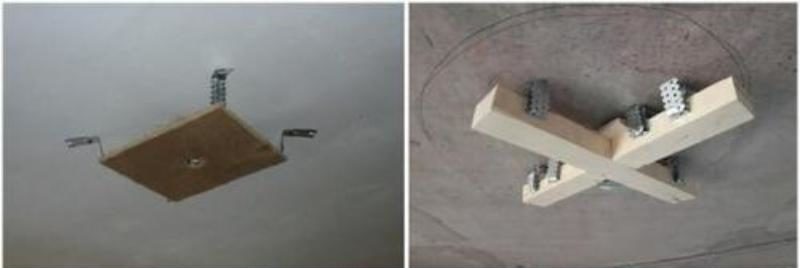
Flexible profile hangers are used for fixation. The distance from the ceiling to the platform is adjusted by bending the metal profiles. To determine this distance, a painting thread is stretched between opposite walls, at the attachment point of the plasterboard ceiling so that the platform is close to its surface. This method is also suitable for a stretched canvas.
If included with the chandelier are mounting strips, they are screwed to the platform through the plasterboard with ordinary screws, pre-drilled drywall drill diameter equal to the screw. This is important if there is a gap between the platform and the sheet.
The distance between the fastening screws on the strip in different models individually, they must be set and fixed with nuts before the stage of its installation on the platform. In addition, the position of the bar depends on the location of The chandelier is relative to the walls of the room, which must be taken into account when pre-marking the holes for drilling.
On a butterfly dowel
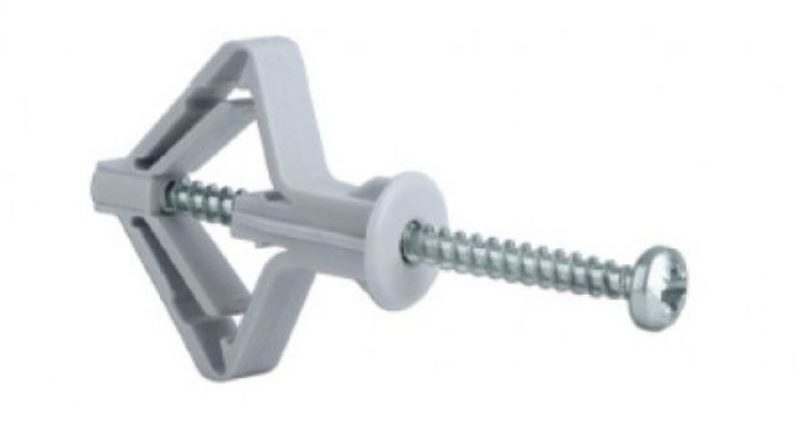
It is a fastening detail designed to fix the elements of the structure on drywall sheets. Suitable for installing the chandelier directly on the GPB, or on the embedded board. It is done in the following way:
- A hole of the required diameter is drilled.
- Dowel is placed in it up to the stop, so that only the plastic cap protrudes.
- To it attached mounting bar with fixed bolts fastening to the chandelier.
- Installation is done with a screw.
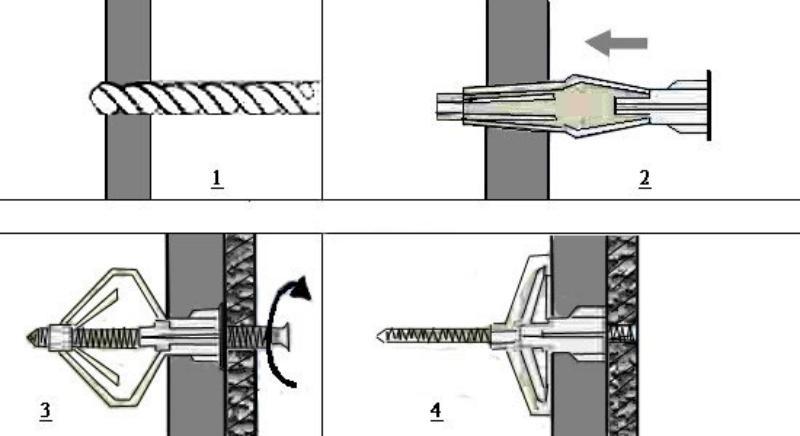
Anchor mount
Most often used to install a hook, less often - mounting bar, as the degree of fixation allows to hold heavy elements of construction weighing more than 10 kg. Despite the apparent complexity of the fastener, the algorithm for its installation is simple:
- A hole is drilled in the concrete slab according to the diameter of the anchor.
- Bolt or hook with a screwed spacer bolt and collet is inserted so that the collet was flush with the surface of the ceiling.
- By twisting the hook, the expansion bolt wedges the anchor in the hole.
How to hang a chandelier if the ceiling is already trimmed
All the ways described will be much more difficult to apply if the drywall is already fixed to the profiles. If dismantling the gypsum board does not seem appropriate, then the easiest option is to mount the lamp directly on it. To do this, it is better to choose lightweight models, weighing no more than 3 kg. In this situation, there are several mounting options.
For the bar.
With a butterfly dowel. In this case, it will be successful if the holes or part of them will be made in places where the gypsum board is attached to the metal profile. An ordinary magnet is used to detect this area. The profile can also be used as a support for the dowel.
By means of a dowel-rod.. Sharp feathers allow you to do without pre-drilling, but you need to avoid hitting the metal profile. The wide thread holds this dowel in the drywall sheet. A variant less reliable than the butterfly, and is only suitable for small and lightweight luminaires..
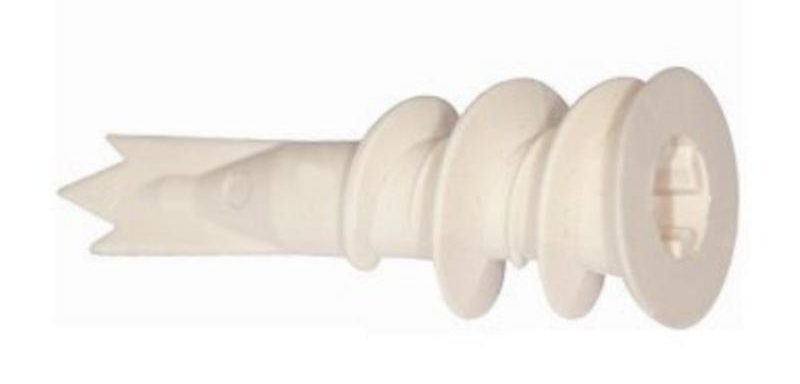
A "quick install" type dowel.. For this purpose, a long drill through the drywall drills a hole in the base of the concrete slab, then selects a screw to a length slightly less than the depth of the hole + the distance between the main ceiling and the false ceiling. Dowel is inserted at the tip of the screw, driven to its full length, then the screw is removed and screwed through the attached strip again. The method is difficult, requiring honed skills and a good eye. However, if performed successfully, heavy structures can be mounted on such fasteners.
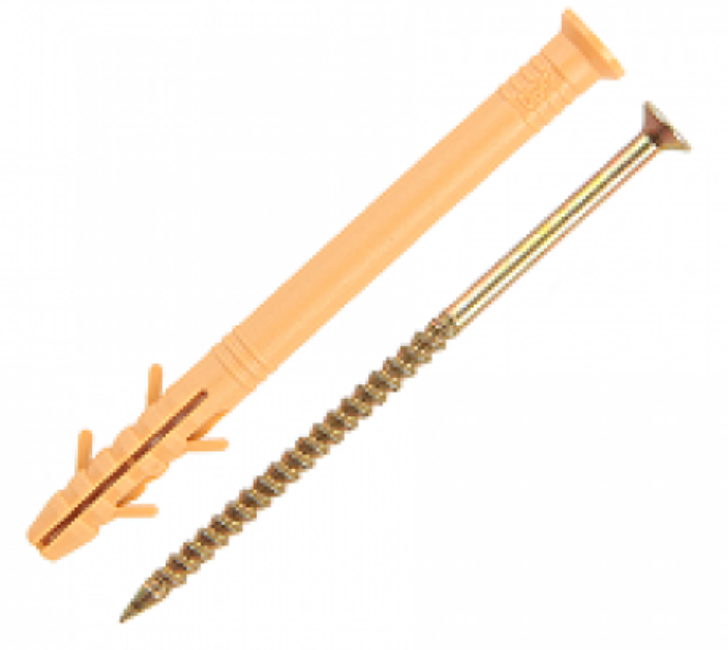
Video on the subject.
In the presented video, only the central "quick mounting" in the cross bar is installed with this method, but it is enough to relieve the load from the plasterboard slab.
For the hook.
With a spring anchor.. A hole is drilled into the drywall with a wide drill bit, into which the anchor is inserted when folded. Once in the free space, the anchors are straightened and pressed to the ceiling with a nut.
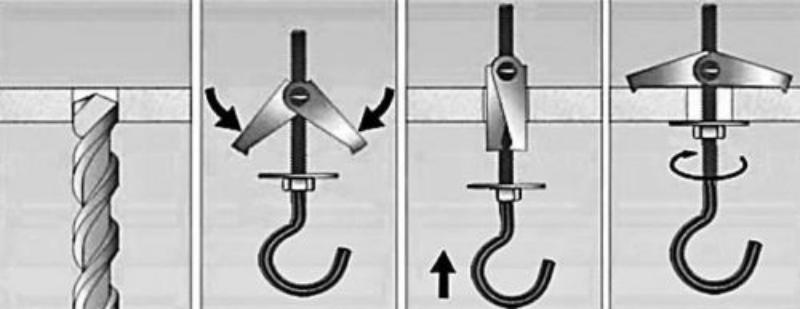
With a standard mounting hook.. To do this, a wide hole is drilled in the drywall with a drill bit. The spacer is driven into the socket so that the central part with a bend hangs over the opening. A flat hook is hooked to this bend and secured with a plastic cap that covers the hole. On the lower end of the hook is put an insulating nozzle.
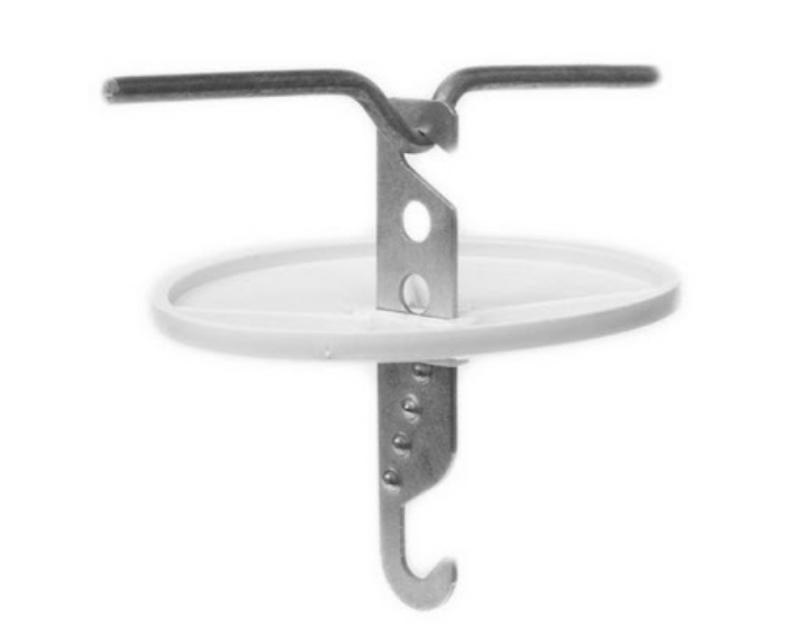
After fixing the lamp on the hook or bar is made connection of all wires. It is better if special terminals are used, as the use of twisting is fraught with the risk of spark formation.
Caution! If you cannot do without twisting wires, it is necessary to use conductors of the same type of material. The connection of copper with aluminum leads to overheating at the point of contact. This phenomenon is especially strong with powerful lamps above 100 W. Heat shrink tubing is recommended for insulation.
How to correctly remove the chandelier from the ceiling of plasterboard
The first thing to do before removing the chandelier is to Disconnect the power supply at the circuit breaker for the entire room. Since in the case of incorrect wiring in some buildings or the presence of self-contained emergency power sources this measure does not guarantee safety, it is necessary to check the sockets in the room with a screwdriver indicator. To provide access to the chandelier will need a stable stepladder or a sturdy table. Further action is taken according to the following scheme:
- Removing the plafond - Depending on the type of design, it may be a plate, glasses or any other type of decorative diffusers. Such parts are removed most often by turning counterclockwise, unscrewing the fixing bolts and latches. If the plafond does not interfere with access to the fasteners and does not greatly affect the weight of the product, it can not be dismantled.If the chandelier is hanging on a hook, you must remove protective decorative cover. This is done by unscrewing the fixing bolt, and then the cap is lowered, revealing the connection to the hook and wires.If the chandelier is overhead and is shaped like a plate, the spring latches must be disconnected to access the fasteners.
- Disconnect the electrical wiring - is easiest if you use terminal blocks type Wago.They can even be handled with one hand, which is convenient if you have to work alone, holding the chandelier with the other hand.If these are screw-type terminal blocks, the conductor is released by releasing the clamping screws.
- The device is removed from the hook or unscrew it from the mounting rail for replacement or repair.
All work must be carried out with protective gloves and goggles, as accidental electrical breakdown or mechanical injury cannot be ruled out.
